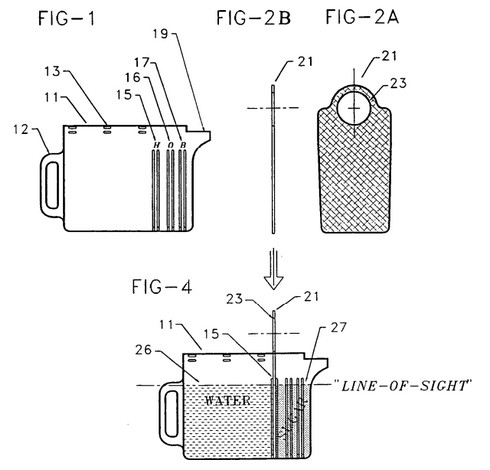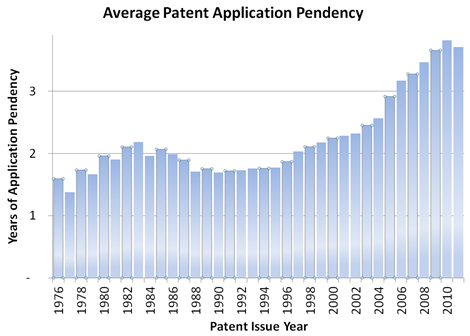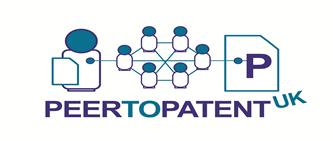Spectralytics v. Cordis (Fed. Cir. 2011)
In a post-verdict opinion, the district court wrote that “if this case had been tried to the Court, the Court likely would have found the ‘277 patent invalid [as Obvious].” However, the lower court refused to substitute its view of the evidence for that of the jury. On appeal, the Federal Circuit affirmed and in the process rejected Justice Breyer’s recent call for special jury verdict forms that separate the factual underpinnings of obviousness from the ultimate legal conclusion.
Obviousness: Here, the jury form simply asked “Did Cordis and Norman Noble prove by clear and convincing evidence that claim 1 of U.S. Patent No. 5,852,277 is invalid for obviousness?” and the jury checked “No.”

The black box of jury decision making is difficult to overturn on appeal because the Federal Circuit upholds jury verdicts unless there is no way that the jury’s conclusion could have been drawn from evidence presented at trial. As the Federal Circuit wrote: “for Cordis to prevail it must establish that the jury’s actual or inferred factual findings were not supported by substantial evidence, or that the evidence was not sufficient to support the findings and conclusions necessarily drawn by the jury on the way to its verdict.” In the recent Microsoft v. i4i decision, Justice Breyer wrote in concurrence that district courts should take steps to help juries separate their factual conclusions from the legal conclusions “by using instructions based on case-specific circumstances that help the jury make the distinction or by using interrogatories and special verdicts to make clear which specific factual findings underlie the jury’s conclusions.” In this case, however, the appellate court agreed that the jury had received proper instruction and the defendant did not challenge the appropriateness of the jury verdict form.
Teaching Away: An obviousness conclusion is less likely when the prior art “teaches away” from the claimed invention. In an interesting aspect of the decision, the appellate panel found that teaching-away does not require words per se, but rather the prior art design itself can teach away from an innovation. Here, the patent at issue involved a laser-cutting device for manufacturing medical stents. The prior art “Swiss-style” devices included a vibration damper to improve cutting accuracy. The claimed invention, however, “embraced” vibration in the entire device and instead improved accuracy by rigidly connecting the work-piece to the laser. The court wrote: “the jury could find, based on the expert testimony, that prior Swiss-style machines taught away from embracing vibrations to improve cutting accuracy because all prior machines improved accuracy by dampening vibrations.”
Commercial Success: Patent law allows a patentee (or patent applicant) to present “secondary indicia” of non-obviousness when attempting to overcome arguments against patentability. Here, Spectralytics argued that the commercial success of the defendants infringing products served as evidence that the invention was non-obviousness. The secondary indicia argument rests on an assumption that any obvious advances would have already been identified and accepted by the industry and thus would not lead to any particularized commercial success. Commercial success is most often disregarded by courts because patentees are unable to prove a close nexus between the patented invention being asserted in litigation and a product’s commercial success. Rather, the commercial success could be due to many other factors that might not be related to the patented invention such as marketing, high quality workmanship, technical advances other than those claimed in the patent-in-question, or low prices. Here, however, the court allowed the nexus to be proven based largely upon the defendant’s advertising:
Spectralytics points to the evidence that Norman Noble stated that its new machine was the reason why its product was better than then-competing products, and that Cordis described the new Noble machine as “superior” and “advanced technology,” with “cutting capabilities and precision not attainable” by the prior laser-cutting system. There was substantial evidence whereby a reasonable jury could have found copying and commercial success, and could have weighed these factors in favor of nonobviousness.
Damages: The jury also awarded a 5% royalty for the infringement. The defendants argued that the royalty was clearly too high because it would result in damages that were well above what its costs would have been to use a non-infringing mechanism at the time that the infringement began. The court accepted that argument in theory, but rejected it on the evidence. Holding that, based upon the evidence, the jury could have rejected the defendant’s argument that the alternatives were both available and acceptable. The appellate panel’s affirmance of the damage award may serve as an important counterbalance to recent Federal Circuit cases that demanded more specificity and analytics in damage calculations.
Willful Infringement: The jury also found the patent willfully infringed, but the district court refused to award enhanced damages or attorney fees to the patentee. On appeal, the Federal Circuit vacated that holding and remanded for a new determination as to whether the Read factors support enhanced damages. Quoting its i4i decision, the court wrote: “Although a finding of willfulness is a prerequisite for enhancing damages under § 284, the standard for deciding whether – and by how much – to enhance damages is set forth in Read, not Seagate.” Much like in a criminal sentencing hearing, the appellate court here wrote that the decision on whether to enhance damages after a finding of willful infringement may be based on a wider set of evidence than can the underlying decision of whether the infringement was willful. In particular, the court found that it when deciding whether to award enhanced damages, it is “inappropriate to discount evidence relating to whether there was adequate investigation of adverse patent rights. That is only one of the Read factors, but Seagate did not hold that it should be ignored.”


 Three of the references were directed toward containers with movable dividers used to separate solid items such as screws or bolts. (See figure). In determining that those references were non-analogous, the court first considered the problem being solved by Klein and arrived upon a somewhat narrowly defined single problem of: “making a nectar feeder with a movable divider to prepare different ratios of sugar and water for different animals.” The court then quickly concluded that the three solid item separators were not pertinent to Klein’s problem “since none of these three references shows a partitioned container that is adapted to receive water or contain it long enough to be able to prepare different
Three of the references were directed toward containers with movable dividers used to separate solid items such as screws or bolts. (See figure). In determining that those references were non-analogous, the court first considered the problem being solved by Klein and arrived upon a somewhat narrowly defined single problem of: “making a nectar feeder with a movable divider to prepare different ratios of sugar and water for different animals.” The court then quickly concluded that the three solid item separators were not pertinent to Klein’s problem “since none of these three references shows a partitioned container that is adapted to receive water or contain it long enough to be able to prepare different  Stanford v. Roche,
Stanford v. Roche, 
 I would like to thank Patently-O for giving me the opportunity to post about the UK Peer To Patent pilot, which we launched this morning at
I would like to thank Patently-O for giving me the opportunity to post about the UK Peer To Patent pilot, which we launched this morning at  Our pilot will run for the next six months and over that time we will load about 200 UK patent applications onto the website. We started with 20 this morning and these will be followed by about 10 more every week over the next few months. In common with the US and IP Australia pilots, the applications all come from the field of computing. We are also working with the New York Law School who were the same team that established the US pilot.
Our pilot will run for the next six months and over that time we will load about 200 UK patent applications onto the website. We started with 20 this morning and these will be followed by about 10 more every week over the next few months. In common with the US and IP Australia pilots, the applications all come from the field of computing. We are also working with the New York Law School who were the same team that established the US pilot.